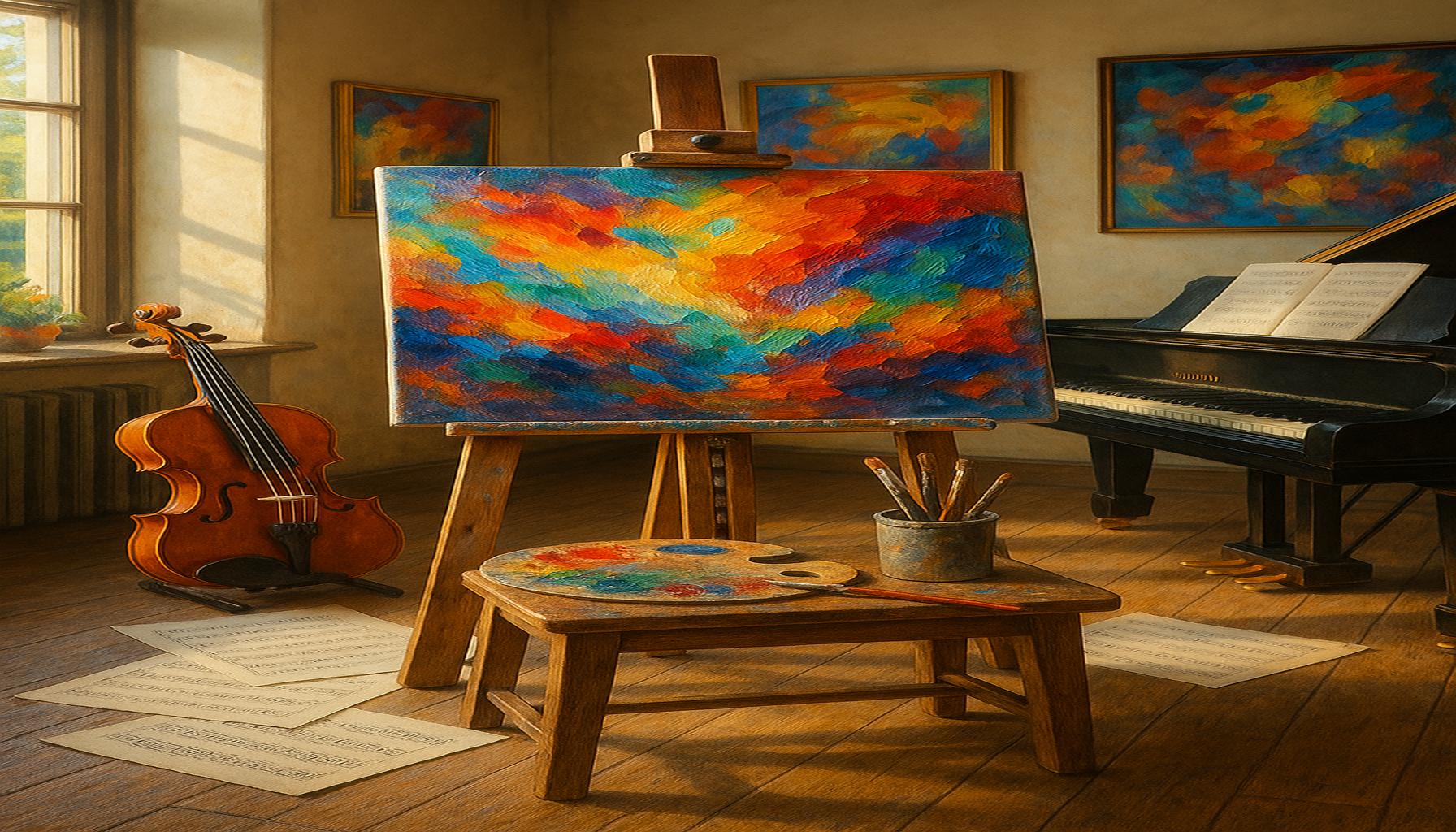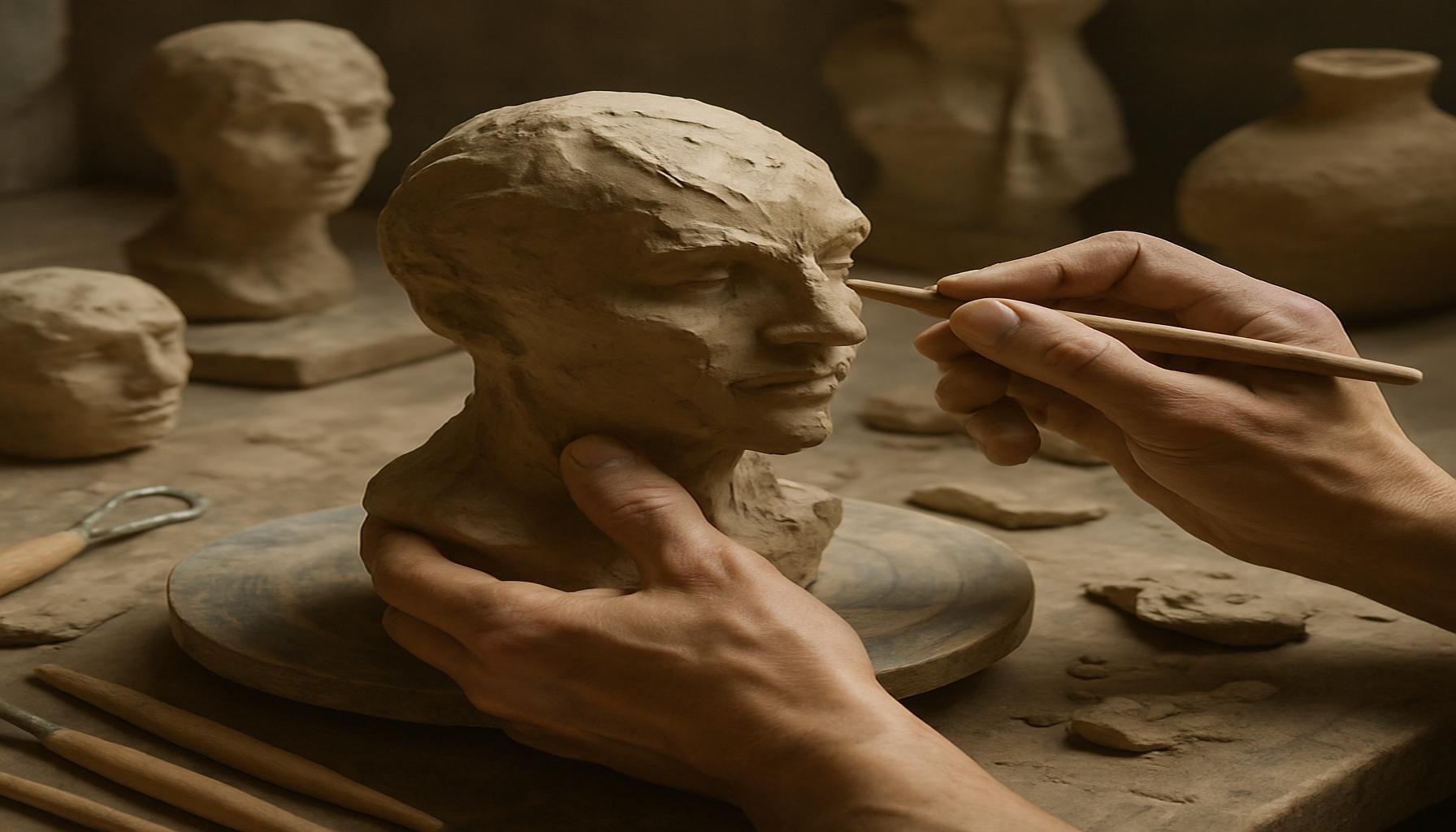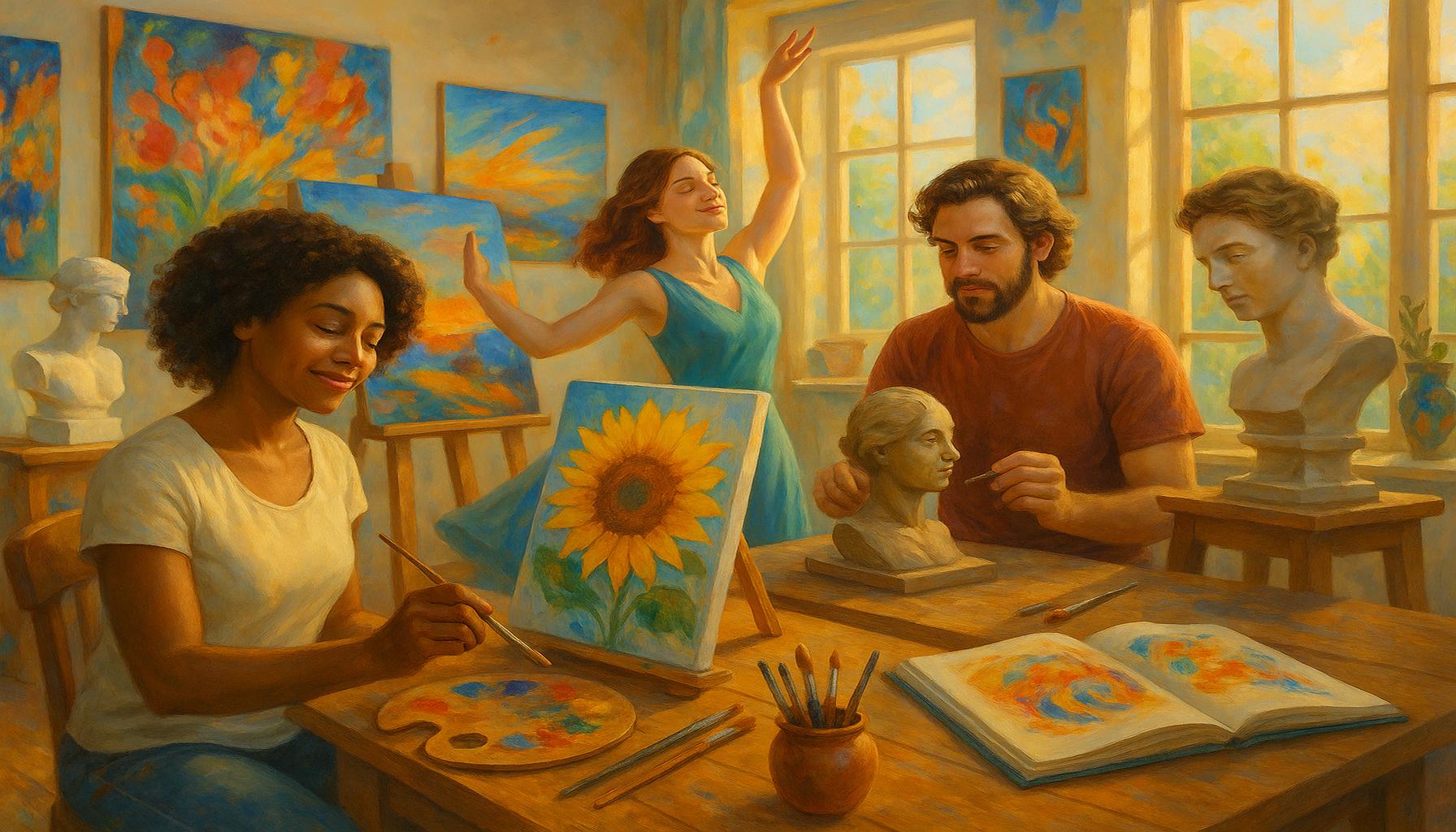Digital Art Evolution How Technology is Shaping Creativity
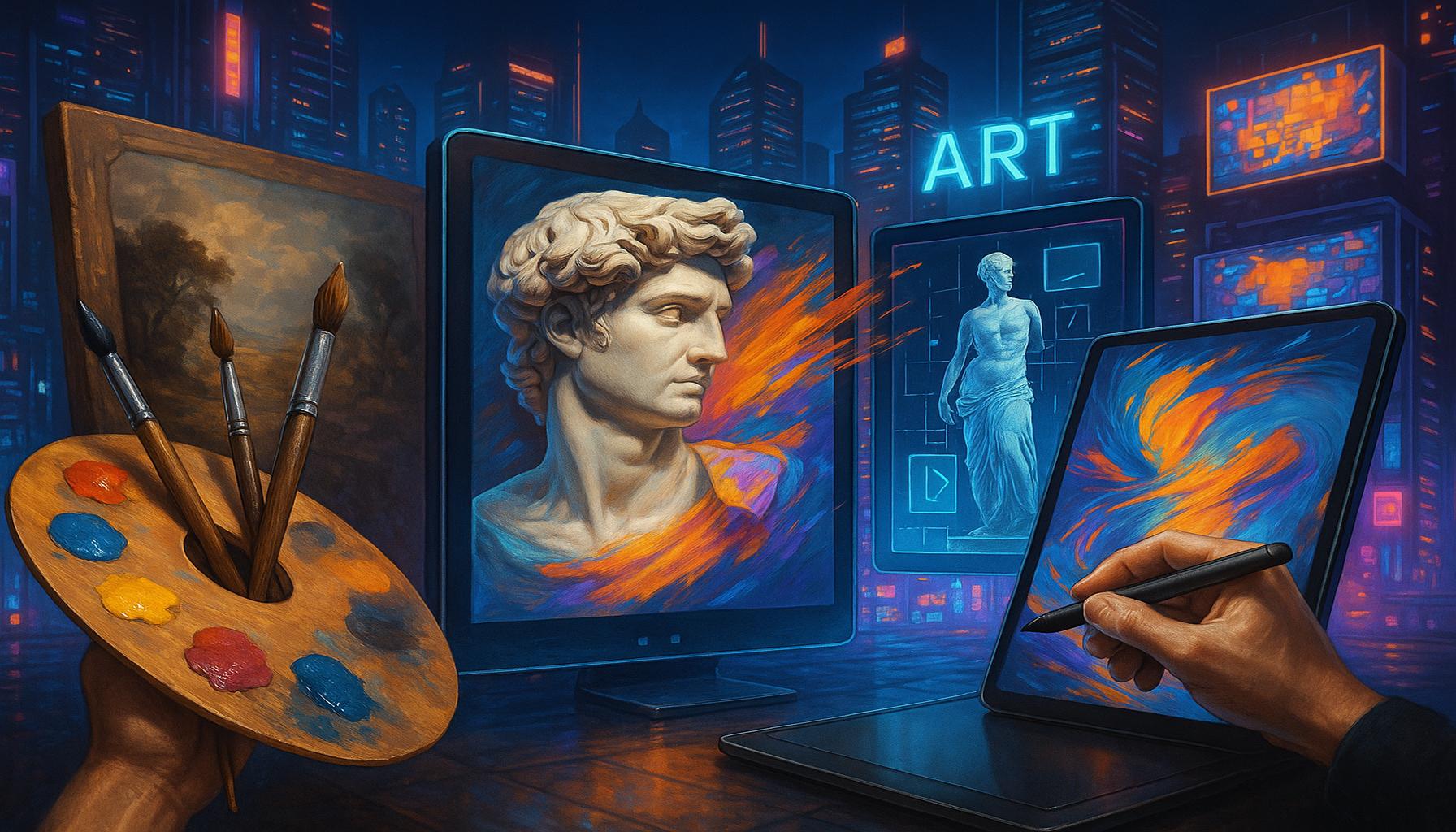
Introduction
The world of creativity is undergoing a remarkable transformation, driven by the relentless advancement of technology. Digital art has emerged as a groundbreaking medium, blending traditional artistic techniques with the power of digital tools. This shift not only expands the boundaries of what art can be but also democratizes artistic expression, making it accessible to more people than ever before.
Understanding this evolution is crucial for anyone passionate about creative hobbies. The relationship between technology and creativity is constantly evolving, creating new opportunities for artists and enthusiasts alike. As we dive deeper into this topic, we’ll explore the essential ways technology is reshaping artistic expression.
Get ready to discover the Top 5 innovations and trends in digital art that are defining the future of creativity:
- Emergence of various digital platforms
- Impact of Artificial Intelligence on artistic processes
- Rise of augmented and virtual reality in art creation
- Accessibility of powerful software and tools
- The role of social media in art visibility and community building
Top 5: The Evolution of Digital Art – How Technology is Transforming Creativity
The world of digital art has experienced remarkable evolution, fueled by technological advancements that continue to broaden the horizons of creative expression. From the tools that artists wield to the platforms providing global reach, technology has fundamentally reshaped the creative landscape. This article delves into the top five transformative developments that highlight the evolution of digital art and explores how they are revolutionizing creativity.
5. The Emergence of Digital Tools
The emergence of digital tools marked a pivotal turning point in the art world, forever changing the methodology and potential of creative work. Traditional boundaries dissolved as software like Adobe Photoshop and Corel Painter allowed artists to simulate traditional art forms digitally with a click of a button. These programs provide an extensive range of features such as layers, customizable brushes, and intricate filters that facilitate experimentation on an unprecedented scale. Artists can manipulate their digital canvases with precision and flexibility, fostering the creation of visually compelling and unique works of art.
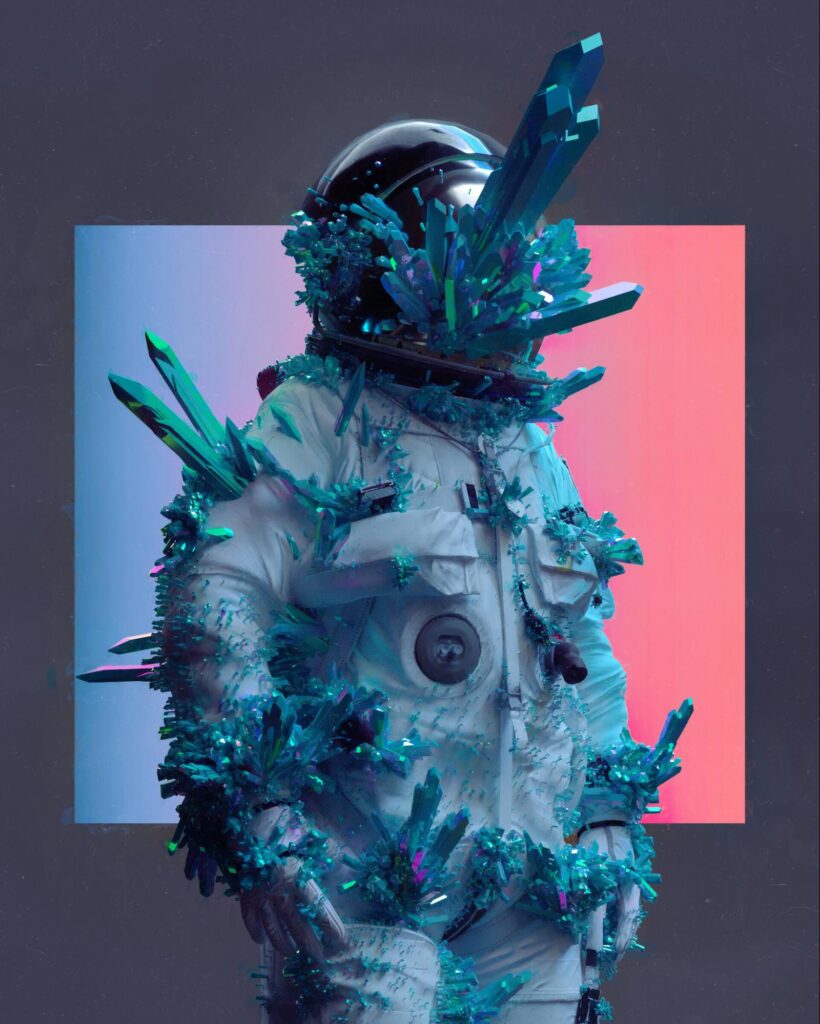
Beyond software, drawing tablets such as the Wacom Intuos and iPad Pro have seamlessly merged traditional sketching techniques with digital innovations. These devices enable artists to sketch, paint, and edit with remarkable accuracy while taking advantage of the infinite possibilities offered by digital enhancements. The ability to alter and undo steps effortlessly encourages more daring and experimental approaches to art-making. This coupling of traditional mastery with modern technology sets a new standard in digital artistry.
- Dynamic layering options: Artists can construct and manipulate complex compositions with ease.
- Infinite revision capabilities: Digital tools allow for continuous refinement without degradation of quality.
- Integration with other digital formats: Artists can incorporate various digital elements, creating multimedia experiences.
4. Platforms for Sharing Art
The proliferation of social media and online platforms has dramatically transformed the manner in which art is shared and consumed. Platforms such as Instagram, ArtStation, and Behance have shattered previous barriers, democratizing exposure for artists worldwide. These platforms serve not only as galleries but also as community hubs where artists can build audiences, receive feedback, and participate in global artistic movements.
Social media allows artists to showcase their portfolios to a broader audience than ever before, often leading to career-defining opportunities. Direct engagement with viewers and potential clients fosters a dynamic interchange between creator and consumer, also making it possible for artists to monetize their work through direct sales and commissions. The resulting economic empowerment signifies a new chapter for many artists, reshaping their professional landscapes and pushing creative boundaries.
3. The Influence of Artificial Intelligence
Among the most groundbreaking advancements is the integration of artificial intelligence (AI) in digital art. AI-powered tools such as DeepArt, DALL-E, and RunwayML have opened up a frontier where human creativity intersects with machine learning, resulting in innovative and sometimes surreal artistic expressions. These applications can ingest voluminous datasets to generate novel compositions, suggest styles, and refine artistic elements, extending the possibilities of creativity beyond human constraints.
The emergence of AI in art spurs dialogues about the essence of authorship and originality. While AI can certainly drive innovative ideas, it demands human interpretation to transform machine-generated concepts into meaningful art. This symbiotic collaboration between human artisans and machine intelligence fosters an environment ripe for pioneering discovery and creative advancement.
2. Virtual and Augmented Reality
Technological advancements in virtual reality (VR) and augmented reality (AR) are generating immersive art experiences that elevate the sensory engagement with art. These technologies facilitate the transformation of static art into interactive, multidimensional explorations that captivate audiences deeply. VR platforms such as Oculus Medium and Tilt Brush allow artists to sculpt and paint in boundless virtual spaces, revolutionizing the perception and interaction with art forms.
Similarly, AR technology enables artists to superimpose digital creations onto real-world environments, enriching the tactile interaction with art in everyday settings. This capability not only broadens the definition of art but also encourages audiences to engage with creative works in new ways, blurring the lines between physical and digital realms. This evolution signifies an expansion in artistic influence, inviting viewers to immerse themselves in the experiential aspects of art.
1. The Rise of NFTs and Blockchain Technology
At the pinnacle of digital art evolution is the formidable impact of non-fungible tokens (NFTs) and blockchain technology. NFTs have fundamentally altered the art market by enabling digital artists to sell and prove ownership of their work in a previously inconceivable manner. This innovation has minted new economic opportunities for artists, reaffirming the legitimacy and collectibility of digital art.
The meteoric rise of NFTs has sparked dialogue around the nature of value and authenticity in the digital age. Monumental sales, such as those achieved by renowned digital artist Beeple, underscore the transformative potential of NFTs in reshaping perceptions of digital art. The intertwined growth of blockchain technology and NFTs offers artists an unprecedented era where digital art holds significant cultural and monetary value, aligned with or surpassing traditional art forms.
In conclusion, the technological evolution in digital art unveils a promising vista for the future of creativity. Continuous developments provide artists with the capacity to explore further-reaching boundaries, generating works that captivate visually, engage interactively, and resonate profoundly with audiences worldwide.
As we delve deeper into the evolution of digital art, it becomes evident that technology’s role in transforming creativity is multifaceted and transformative. The emergence of new tools, platforms, and methodologies has not only influenced the creation of art but also its consumption and interaction. Below, we explore several compelling categories that encapsulate the various advantages and characteristics of this exciting evolution in the realm of digital creativity.
| Category | Key Features | Advantages | Disadvantages | Beneficiaries |
|---|---|---|---|---|
| Digital Tools and Software | Innovative software options like Photoshop, Procreate, and Blender. | Enhanced creativity through limitless possibilities and user-friendly interfaces. | Software can be expensive and requires continuous updates. | Artists looking to expand their skill set and capabilities. |
| Social Media Platforms | Platforms like Instagram and Behance showcase digital art to vast audiences. | Global reach and immediate feedback from a diverse audience enhance visibility. | Over-saturation and potential for negative feedback can discourage some artists. | Emerging artists seeking exposure and networking opportunities. |
| Virtual and Augmented Reality | Immersive experiences that allow viewers to engage with art in new dimensions. | Innovative interaction with art blurs the line between creator and spectator. | Access to VR/AR technology can be limited and requires specialized knowledge. | Tech-savvy artists and audience members looking for immersive experiences. |
| Blockchain and NFTs | Mechanisms for digital ownership and provenance via blockchain technology. | Secure ownership and potential financial opportunities for artists through NFT sales. | Environmental concerns associated with blockchain technology and market volatility. | Collectors and artists exploring new avenues for creativity and revenue. |
The continuous evolution of the digital landscape presents both opportunities and challenges for creators. With each new technology adopted, artists can explore uncharted territories of imagination and innovation, driving the future of digital art. This transformation is not merely about new tools but is integral to redefining what it means to create and experience art today.
Frequently Asked Questions about the Evolution of Digital Art
How has technology influenced traditional art forms?
Technology has significantly impacted traditional art forms by introducing new tools and techniques. Traditional artists now have access to digital canvases, graphic tablets, and sophisticated software that allows them to explore and expand their creativity in unprecedented ways. These digital advancements have not only enhanced the precision of artwork but have also allowed artists to experiment with mixed media in ways that were impossible before.
What are the most popular tools for creating digital art today?
Today’s digital artists have a wide array of tools at their disposal, with some of the most popular being Adobe Photoshop, Corel Painter, and Procreate. These platforms provide artists with a virtual studio where they can manipulate and transform their artwork in a variety of styles. Additionally, the rise of 3D modeling software like Blender and ZBrush has paved the way for new dimensions in art creation, allowing artists to delve into intricate details with precise control.
What challenges do digital artists face in the contemporary art world?
Despite the opportunities that technology offers, digital artists encounter several challenges. One significant issue is the ongoing debate about the authenticity and value of digital art compared to traditional mediums. Furthermore, copyright concerns and the ease of digital replication can pose threats to the integrity of an artist’s work. Lastly, keeping up with the rapid evolution of software and tools presents a constant learning curve, demanding artists to continually adapt and refine their technical skills to remain competitive.
Can digital art be considered ‘real’ art?
The question of whether digital art is considered ‘real’ art has sparked extensive debate. However, as technology continues to weave itself into the fabric of creative expression, digital art is increasingly recognized for its merit and innovation. Many museums and galleries around the world are now featuring digital exhibitions, showcasing the impact and relevance of digital art in the modern era. As with any new medium, its acceptance hinges on the perception of artistry and creativity it embodies.
How has the evolution of digital art affected the art market?
The digital art market has experienced a significant transformation, particularly with the advent of Non-Fungible Tokens (NFTs) that offer new ways of buying, selling, and owning art digitally. This innovation has opened new revenue streams for artists and has redefined how audiences perceive and engage with art. However, it also raises questions about the sustainability and environmental impact of digital practices, as well as long-term value retention in an ever-changing market landscape.
Conclusion
The evolution of digital art signifies a revolutionary chapter in the realm of creativity. As highlighted, the fusion of art and technology is redefining the boundaries and enabling creators to push beyond traditional limitations. By integrating advanced tools such as artificial intelligence, virtual reality, and sophisticated graphic design software, a new dimension of art is emerging, characterized by innovation, accessibility, and global collaboration.
Firstly, artificial intelligence offers artists unprecedented possibilities, aiding them not just in execution but in ideation as well. AI-driven platforms can simulate styles, creating unique opportunities for artists to experiment with novel forms and aesthetics, inspiring futuristic visions. Additionally, virtual reality immerses both the artist and the audience into an interactive experience that was once unfathomable, allowing one to explore art in a deeply personal way.
Moreover, the democratization of digital tools has made art creation more inclusive. Individuals from various backgrounds can access powerful software, leveling the playing field and encouraging a plurality of voices in the art community. This accessibility has given rise to a vast digital canvas that accommodates a diverse array of expressions and narratives.
As digital art continues to evolve, it fuels an ongoing dialogue between tradition and innovation, challenging creatives to rethink their processes and embrace technology’s role in their craft. The convergence of creativity and technology promises to unlock uncharted territories in the art world, ensuring that creativity remains dynamic, expansive, and infinitely inspiring.
Ultimately, the transformation driven by technology serves to remind us that the essence of art—its spirit of exploration and expression—remains at its core. This evolution invites artists and enthusiasts alike to delve deeper, explore further, and continually redefine what is possible.

